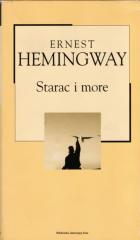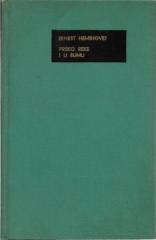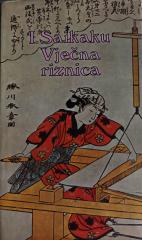
Starac i more
The Old Man and the Sea is a novel by Ernest Hemingway, an American writer of the 20th century. Hemingway won the Pulitzer Prize for the novel in 1953 and the Nobel Prize for Literature in 1954.
The Old Man and the Sea depicts a unique relationship between man and nature, marked by a sublime struggle and bitter suffering, but also by the most sincere mutual respect. At the very beginning of the novel, Santiago, in his misery and poverty, seems like a man defeated by life. However, Hemingway's heroes are persistent and courageous fighters who never give up. In his fight with the fish, Santiago used weapons typical of humans: intelligence, courage, life experience, competitive perseverance. While the fish, as a natural element, uses exclusively strength and the instinct for survival. In this fight between man and nature, man's spiritual strength and his humanity are most evident. Although the fight with the huge swordfish brings him to the edge of endurance at times, the old man never treats the big fish with hatred. For him, it is an opponent worthy of respect. Although old Santiago lost his fish, which was gnawed to the skeleton by sharks, he is still the moral victor in the end. He has conquered, in fact, he has overcome his own bitterness over the misfortune that has befallen him, his old age and his lack of strength. A true man can never be defeated in a total sense. Although The Old Man and the Sea is not a symbolist work, it contains a number of details that can be interpreted as symbols, the most interesting of which are the allusions to Jesus Christ and his Passion.
Two copies are available
Copy number 2
- Traces of patina





